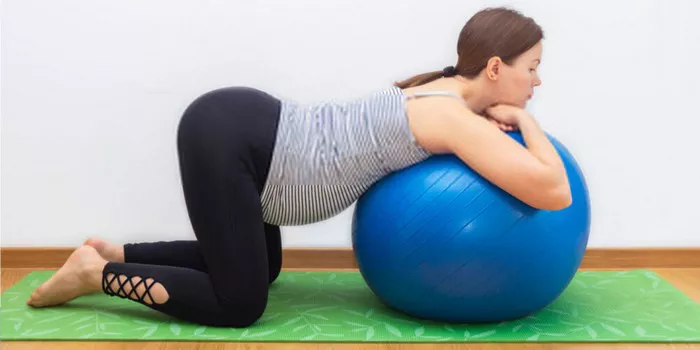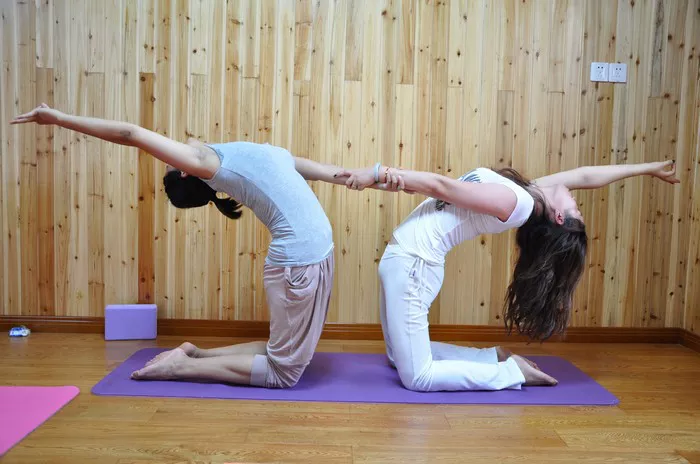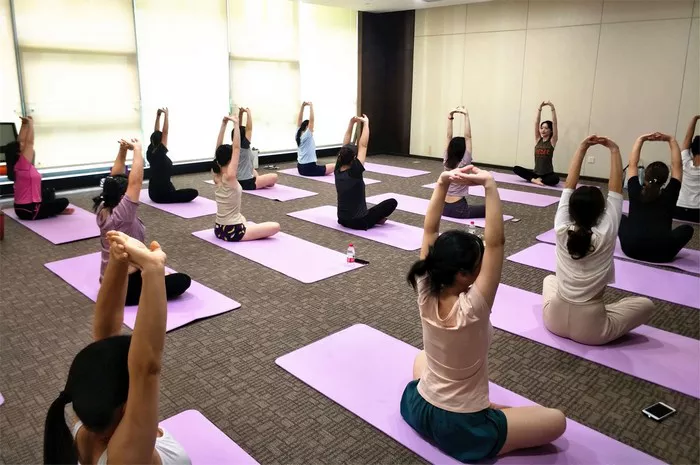Yoga balls, also known as stability balls, Swiss balls, or exercise balls, are versatile tools that can enhance your fitness routine. Whether you are a beginner or an advanced practitioner, incorporating a yoga ball into your exercises can provide numerous benefits, including improved core strength, balance, and flexibility. This comprehensive guide will explore the various ways to use a yoga ball, safety tips, and a range of exercises to help you maximize its potential.
Understanding the Yoga Ball
Before diving into specific exercises, it’s essential to understand what a yoga ball is and why it’s beneficial. A yoga ball is a large, inflatable sphere made of soft elastic material, typically PVC. It was originally used in physical therapy settings but has since become popular in fitness routines due to its ability to challenge stability and engage multiple muscle groups simultaneously.
Benefits of Using a Yoga Ball
- Core Strength: The unstable surface of the ball requires constant engagement of your core muscles to maintain balance.
- Improved Balance and Stability: Regular use helps enhance proprioception, the body’s ability to sense movement, action, and location.
- Versatility: Yoga balls can be used for a wide range of exercises targeting different muscle groups.
- Flexibility and Stretching: They are excellent tools for stretching and improving flexibility.
- Posture Improvement: Sitting on a yoga ball instead of a chair can help improve posture by encouraging an upright seated position.
Choosing the Right Yoga Ball
Selecting the correct size yoga ball is crucial for safety and effectiveness. The size you need depends on your height:
- Under 5’0″ (152 cm): 45 cm ball
- 5’1″ to 5’8″ (155 to 173 cm): 55 cm ball
- 5’9″ to 6’2″ (175 to 188 cm): 65 cm ball
- Over 6’2″ (190 cm): 75 cm ball
When sitting on the ball, your knees should be at a right angle (90 degrees) and your thighs parallel to the ground.
Safety Tips
- Check the Ball for Damage: Regularly inspect your yoga ball for any signs of wear and tear, such as punctures or leaks.
- Proper Inflation: Ensure the ball is correctly inflated. It should be firm but still have some give when you press on it.
- Use on a Non-Slip Surface: Perform exercises on a non-slip surface to prevent the ball from sliding.
- Maintain Proper Form: Focus on maintaining proper form to avoid injury. If you’re unsure, seek guidance from a fitness professional.
- Start Slowly: Begin with simple exercises and gradually increase the difficulty as your stability and strength improve.
Basic Exercises with a Yoga Ball
1. Seated Balance
This exercise is excellent for beginners to get accustomed to the instability of the ball.
- Sit on the center of the yoga ball with your feet flat on the floor, hip-width apart.
- Engage your core and keep your back straight.
- Lift one foot off the ground and hold for a few seconds, then switch to the other foot.
- As you become more comfortable, try lifting both feet off the ground simultaneously.
2. Wall Squats
Wall squats with a yoga ball are great for strengthening the legs and glutes.
- Place the ball between your lower back and a wall.
- Walk your feet forward so you are leaning against the ball.
- Bend your knees and lower into a squat, keeping your back pressed against the ball.
- Hold for a few seconds and then rise back up.
3. Bridge
This exercise targets the glutes, hamstrings, and lower back.
- Lie on your back with your feet resting on the yoga ball and your arms by your sides.
- Engage your core and lift your hips towards the ceiling, forming a straight line from your shoulders to your knees.
- Hold for a few seconds before lowering back down.
4. Plank
A plank on a yoga ball intensifies the traditional plank by adding an element of instability.
- Place your forearms on the ball and extend your legs behind you, toes on the ground.
- Keep your body in a straight line from head to heels.
- Engage your core and hold the position for as long as you can while maintaining proper form.
5. Push-Up
Performing push-ups with your feet on the ball adds a balance challenge.
- Place your hands on the ground and your shins on the ball.
- Perform a push-up by lowering your chest to the ground and then pushing back up.
- Keep your core engaged throughout the exercise.
Advanced Exercises with a Yoga Ball
1. Pike
The pike is an advanced core exercise.
- Start in a plank position with your feet on the ball.
- Engage your core and lift your hips towards the ceiling, rolling the ball towards your hands.
- Lower your hips back to the plank position.
2. Ball Pass
This exercise targets the entire core.
- Lie on your back holding the ball above your head and your legs extended.
- Engage your core and lift your legs and arms, passing the ball from your hands to your feet.
- Lower your arms and legs back to the ground without letting them touch.
- Repeat, passing the ball back to your hands.
3. Hamstring Curl
This exercise targets the hamstrings and glutes.
- Lie on your back with your feet on the ball and your arms by your sides.
- Lift your hips to form a straight line from your shoulders to your feet.
- Bend your knees and roll the ball towards your hips.
- Extend your legs back out, keeping your hips lifted.
4. Reverse Back Extension
This exercise strengthens the lower back.
- Lie face down on the ball with your hands on the ground for support.
- Engage your core and lift your legs towards the ceiling, keeping them straight.
- Lower your legs back down without touching the ground.
Using a Yoga Ball for Stretching
1. Back Stretch
This stretch helps relieve tension in the lower back.
- Sit on the ball and walk your feet forward until your lower back is resting on the ball.
- Extend your arms above your head and let your back arch over the ball.
- Hold the stretch for 20-30 seconds.
2. Chest Stretch
Stretching the chest can help improve posture and reduce tightness.
- Sit on the ball and walk your feet forward until your upper back is resting on the ball.
- Let your arms fall to the sides, opening up your chest.
- Hold the stretch for 20-30 seconds.
3. Hip Flexor Stretch
This stretch targets the hip flexors and quads.
- Kneel on the ground with the ball in front of you.
- Place one foot on the ball and push your hips forward.
- Hold the stretch for 20-30 seconds and switch sides.
4. Side Stretch
Stretching the sides can help with flexibility and relieve tension.
- Sit on the ball and extend one leg to the side, keeping the other leg bent.
- Reach over your head with the opposite arm, stretching to the side.
- Hold the stretch for 20-30 seconds and switch sides.
See Also: Top 10 Simple Yoga Poses and How to Do
Incorporating a Yoga Ball into Daily Life
1. As a Chair
Using a yoga ball as a chair can help improve posture and core strength.
- Sit on the ball with your feet flat on the floor.
- Keep your back straight and engage your core.
- Use it for short periods throughout the day to avoid fatigue.
2. Desk Exercises
Incorporate simple exercises while sitting on the ball at your desk.
- Seated March: Lift one foot off the ground at a time, mimicking a marching motion.
- Pelvic Tilts: Tilt your pelvis forward and backward to engage your core and lower back.
- Seated Leg Lifts: Extend one leg at a time while maintaining balance on the ball.
3. Pregnancy Support
Yoga balls can be beneficial during pregnancy for exercise and labor preparation.
- Pelvic Circles: Sit on the ball and gently move your hips in circular motions to relieve tension.
- Birthing Ball: Use the ball for support during labor to reduce pain and encourage optimal fetal positioning.
Common Mistakes to Avoid
- Using the Wrong Size Ball: Ensure you are using the correct size ball for your height to maintain proper form and safety.
- Overinflating or Underinflating the Ball: Proper inflation is key to the effectiveness and safety of the exercises.
- Neglecting Form: Always prioritize proper form over the number of repetitions to prevent injury.
- Ignoring Pain: If you experience pain, stop the exercise and reassess your form or consult a professional.
- Skipping Warm-Up: Always warm up before starting your workout to prepare your muscles and joints.
Conclusion
A yoga ball is a versatile and effective tool that can enhance your fitness routine by improving core strength, balance, flexibility, and posture. By following the exercises and tips outlined in this guide, you can safely and effectively incorporate a yoga ball into your workouts and daily life. Remember to start slowly, maintain proper form, and gradually increase the intensity of your exercises. With consistent practice, you will experience the numerous benefits that a yoga ball has to offer.
Related topics:



















